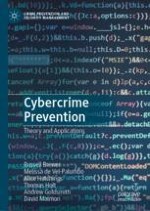This book articulates how crime prevention research and practice can be reimagined for an increasingly digital world. This ground-breaking work explores how criminology can apply longstanding, traditional crime prevention techniques to the digital realm. It provides an overview of the key principles, concepts and research literature associated with crime prevention, and discusses the interventions most commonly applied to crime problems. The authors review the theoretical underpinnings of these and analyses evidence for their efficacy. Cybercrime Prevention is split into three sections which examine primary prevention, secondary prevention and tertiary prevention. It provides a thorough discussion of what works and what does not, and offers a formulaic account of how traditional crime prevention interventions can be reimagined to apply to the digital realm.
